Rumble turned to roar as the field accelerated under a fluttering green flag. The night’s main event was underway: 25 cars, 25 laps, one winner. In the madness, promising young driver Carson Macedo surged ahead, and rival racers jockeyed for spots in his dirt wake. Sliding, snorting, mere inches apart, the pack poured into Knoxville Raceway’s first turn.
Just as in the old Billy Joel song, it was 9 o’clock on a Saturday and the regular crowd had shuffled in. While tonight’s grandstand-shaking rush of race cars felt novel to me, a similar scene had already played out many times over within the past two hours across the United States. There are an estimated 900 short tracks, dirt or paved ovals measuring less than a mile in length, operating throughout the country and featuring grassroots racing on a weekly cadence. On any given summer weekend, thousands of racers take the green flag.
And, occasionally, the red. Lap three, Pennsylvania racer Brock Zearfoss overcooked Turn 3 and snagged the white guardrail, sheetmetal shrapnel scattering as the car violently tumbled to a stop. Cleanup ensued, then racing resumed, equally as intense—as if the flipping car five minutes earlier had never happened.

Indeed, these bullrings provide incredible competition. It’s high-speed, tight-quartered, mechanical drama. Look closer, though, and you’ll see that these tiny tracks serve a much larger purpose beyond rural proving grounds. Like a local church or a high school ball field, these ovals dotting the American countryside are social centers for the small-town communities among which they’re nestled. They serve as a meeting place for racers, friends, families, and local leaders alike, amassing residents otherwise siloed by phone screens and 9-to-5 grinds.
Visit enough tracks and you’re sure to witness a wedding, a baby gender reveal, or the scattering of ashes on a front straight. On-site museums, local celebrities belting the national anthem, fireworks, and a hot dog tastier than any baseball wiener. Cheaper, too, as ticket prices are traditionally a fraction of that for big-league stick-and-ball contests. These tracks support their neighbors, give back to their community, and generate revenue for their entire county. None exemplifies this community beacon as well as Knoxville Raceway in Iowa.
Thirty-five miles southeast of the state capital in Des Moines and hemmed in by farm fields and Iowa’s largest lake, the town of Knoxville is home to one of the most popular ovals in all of America. The first indication of the raceway’s intimate relationship with the surrounding community is the physical position of the track within the city limits. Sprawl has built up around the 120-year-old track and there is no designated parking lot. Local businesses—like the auto parts store across the street—offer spaces for $5, and residents turn their front lawns into makeshift parking lots. During a race weekend, the entire town transforms into an extensive festival, the fairground’s circle track serving as the epicenter.
Originally intended for horse racing, the half-mile oval was gouged out in 1878 from the dark clay called Zook under the Marion County Fairgrounds. Broad, sweeping corners banked at 8 degrees provide multiple fast ways around. As an evening progresses, the track’s surface evolves and drivers modify their racing lines, hunting for moist, grippy clay. On this particular night, second place–running Kerry Madsen found grip near the wall early in the race. By lap five, he and leader Macedo were nip and tuck, dicing and diving, broadsiding over the dirt in unison, like the world’s fastest flamenco. Praise the good Zook; a particularly strong run off the fourth turn’s top groove and Madsen had the lead.
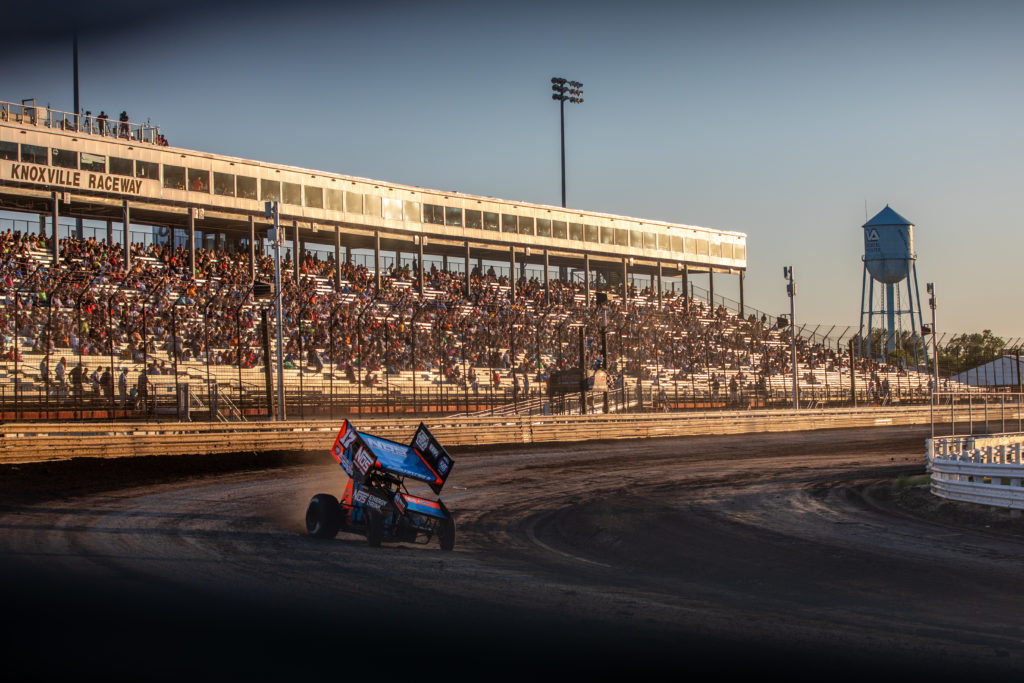
The track hosted its first automobile contest in 1901 but didn’t begin racing weekly until 1954, and it never really had firm footing until the coincidentally named Marion Robinson took over as promoter in 1956. According to the Des Moines Tribune, by 1960, auto racing at the fairgrounds had grossed $105,000. The paper wrote: “These super-modified stock cars which roar around the Marion County Fairgrounds have spun this fair association into prosperity.” Robinson announced in 1961 that Knoxville Raceway would host the First Annual Super-Modified National Championship and pay $1000 to the winner.
The high-dollar event was a smash hit, further elevating the town’s auto racing reputation. “I had never seen so many people,” says National Sprint Car Hall of Fame and Museum executive director Bob Baker, who was in attendance that day to witness the traffic jam lining State Route 14. “They sold out of seats and had to put people in the infield.” The 24-member fair board hired two sheriffs to escort Robinson to the bank on Sunday so that he could deposit paper grocery bags overflowing with cash.
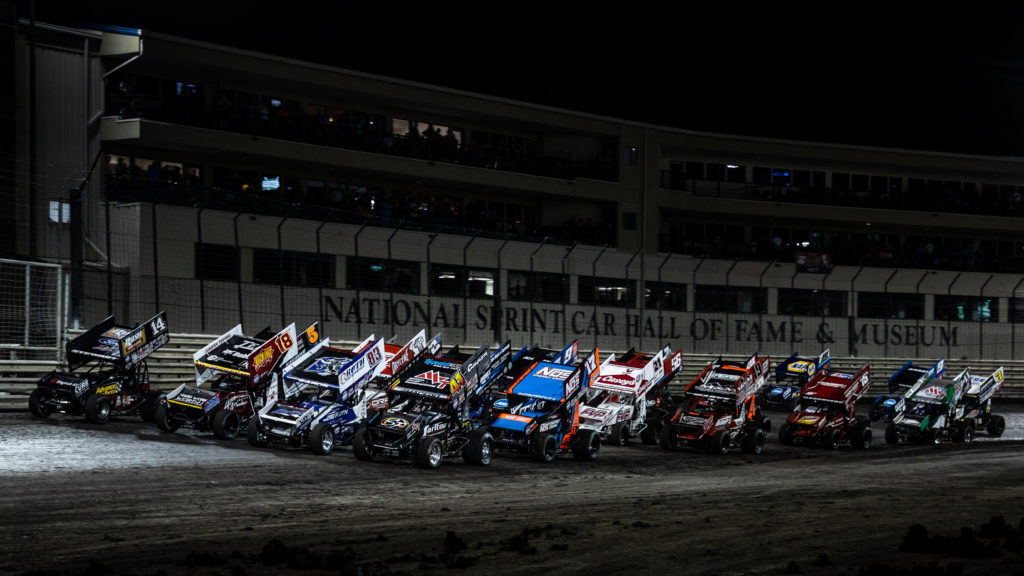
Proving itself beyond a one-hit wonder, the race became an institution, and the influx of money, paired with weekly races, allowed the fairgrounds to upgrade its facilities. Capacity increased and outbuildings sprang up, including the adjacent four-story National Sprint Car Hall of Fame and Museum and a five-story collection of viewing suites. Purses soared, too. Today, Marion Robinson’s big race, renamed the Knoxville Nationals, pays out over $1 million and is largely considered the Daytona 500 of short-track grassroots racing.
As the fairground speedway evolved, so did the cars. Over the years, hot-rodded jalopies became more uniform, eventually transforming into the modern-day tube-frame roadsters called sprint cars. These caged contraptions are powered by a small-block V-8, ranging from an iron 305-cubic-inch engine to an aluminum 410-cube mill with a $50,000 price tag. Depending on the series, sprint cars will often carry two inverted air-foils that combine to produce IndyCar levels of down-force. Everything has been stripped away for the sake of saving weight. With no transmission and no starter motor, the cars require a friendly push-off from 4×4 trucks. Imagine the power-to-weight ratio of a Formula 1 racer with the tech of a Nixon-era muscle car.

The simplicity is part of the appeal—at any oval track, for that matter. Technology is asked to take a respite as many of the tracks are bunkered so deep in the fringe that cell service can be hit or miss. Like playing your favorite vinyl record, it’s a truly analog experience for fans. Drivers, too. Racers test their mettle unabated by traction control or other driver assists. From the cockpit of these modern relics, electric cars and driverless pods seem eons away. Two hands must be on the wheel as a heavy right foot stomps dead-dinosaur juice into carburetors or mechanical fuel-injection systems. And the fans flock in droves to listen to a symphony of uncorked V-8s and watch their favorite drivers sling mud.
The mass attendance throughout the summer spins Knoxville’s economic engine into overdrive. In 2007, the Chamber of Commerce reported that a season of racing provides a $2 million boost to Marion County. Locals say that’s a severe underestimate and argue that the raceway’s economic impact is closer to $40 million in annual tourism revenue for Marion County and the surrounding area.
“Nobody really wants to spend $25,000 on a local economic impact report if the numbers are already decent,” says race director John McCoy with a chuckle. For more certain numbers, McCoy provided the speedway’s ledger. “In one summer, gross revenue for the track is about $5.7 million,” he says. “Of that, we use a few million dollars to pay our 115 seasonal employees, three full-time employees, advertising, taxes, and maintenance. We award over $2 million in driver purse money.” Weekly racing pays for the Marion County Fair in full, and Knoxville Raceway annually gives $50,000 in cash donations to service organizations and $26,000 in local scholarships.
“We understand the importance that the track plays for the community of Knoxville,” says Mayor Brian Hatch, whose first job as a teenager was operating a slot car track in the fairground’s midway. “A lot of people are coming into our town every weekend. They’re staying somewhere, they’re eating somewhere, they’re shopping somewhere.”
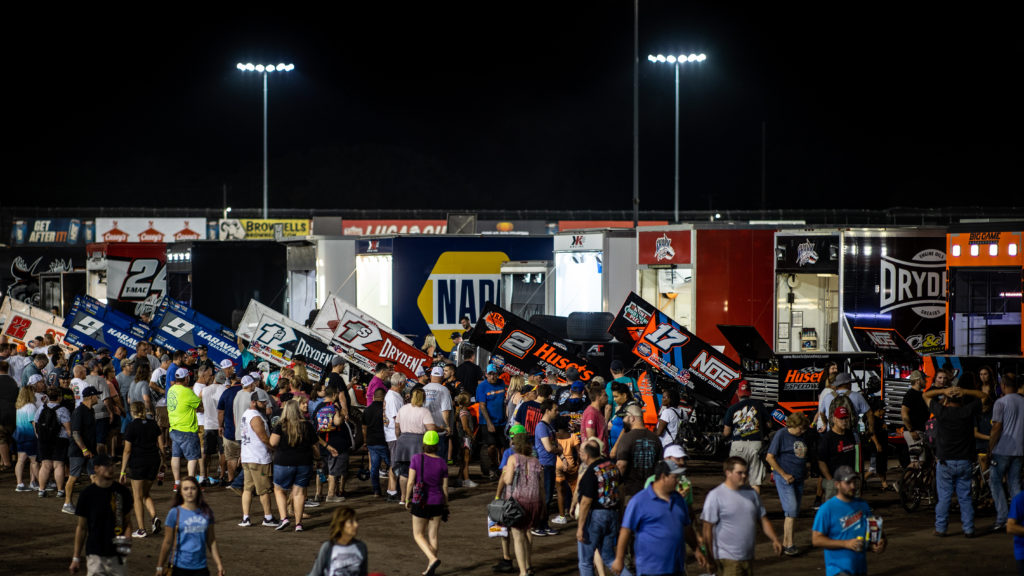
Or, in A.J Mottet’s case, drinking somewhere.
Mottet, a native Iowan, owns the Dingus Lounge, a Knoxville fixture and possibly the most notorious dive bar in Iowa. Mottet grew up an avid race fan; his grandfather won races at the fairground speedway before he was born. “I’ve had a relationship with this town my whole life,” says the 49-year-old. Dingus has operated right outside of the raceway’s first turn since anyone can remember, but by 2002, the old bar had been run into the ground. “I heard this place was going to be tore down, so I inquired about it, and before I knew it, I owned it.”
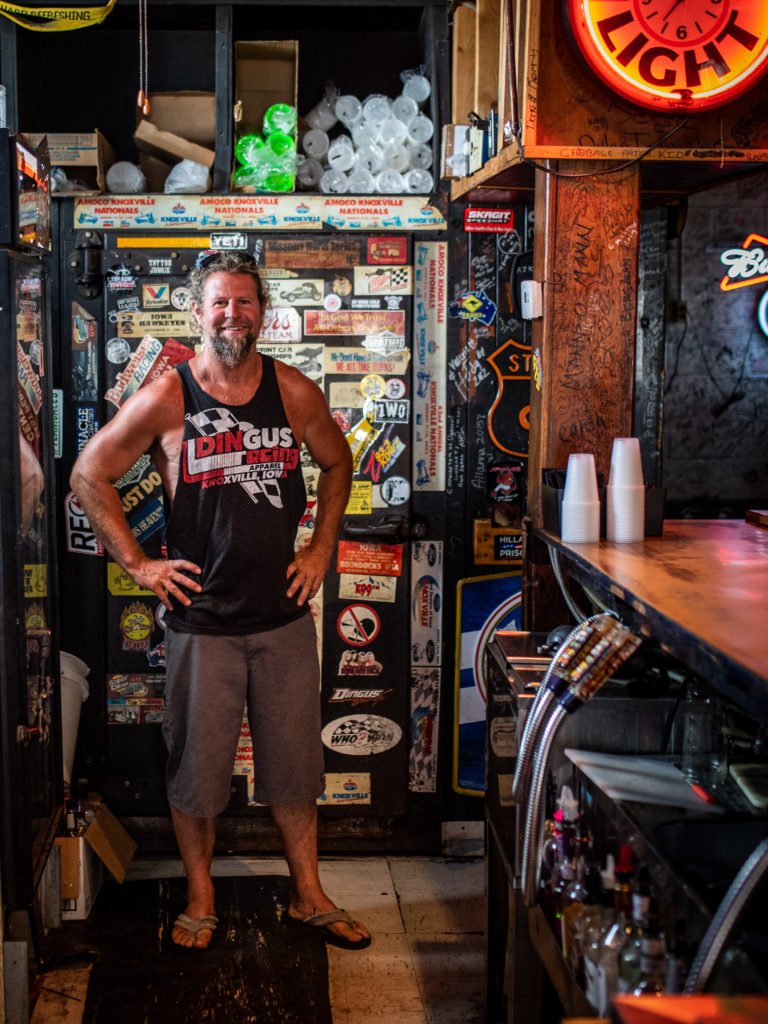
A.J. Mottet
An affable fellow, part businessman and part Dude sporting flip flops, long hair, and a country-mile smile, Mottet leveraged his close-knit relationships with track-goers to bring Dingus back to prominence. Sharpie signatures from racing’s elite, including ex-Formula 1 star Mark Webber, line the bar’s cinder-block walls. NASCAR wunderkind Jeff Gordon, who cut his teeth at Knoxville as a 15-year-old racer in the 1980s, signed his name to the left of the cash register a few years ago. “We’re the same age,” says Mottet of the Rainbow Warrior. “We chased the same girls around the pits as kids.”
Now Mottet keeps the party going, and as soon as (and sometimes before) the checkered flag waves across the street, patrons beeline for his watering hole. During a race weekend, Mottet—who also coaches Knoxville’s high school football squad on weekdays—moves up to 3000 cases of beer and over 5000 shots of liquor. His staff inflates from six to 16 for marquee races, and a server can pull anywhere from $500 to $700 a night.
Down the block from Dingus, Ryan Leavitt operates a local sign shop. In addition to the vinyl wraps and billboards at the speedway, he prints more than 11,000 T-shirts for race fans throughout the season. Ryan’s grandfather, a driver from Missouri, won back-to-back Knoxville Nationals in 1975 and ’76. Ryan’s father, Eddie, left Missouri for Knoxville when he was 21 to start his racing career. He met his wife while she was waiting tables at Mr. C’s, a diner abutting the speedway’s second turn. Now, Ryan, at 24 years old, successfully runs his own sprint car team when he’s not pushing ink.
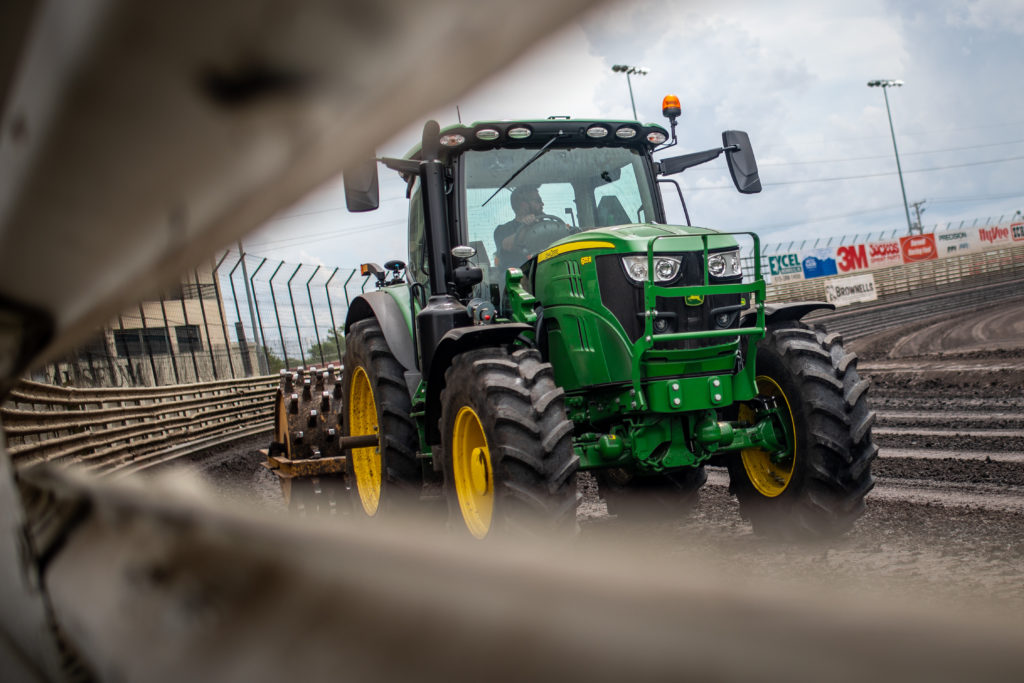
Spend some time walking around the fairgrounds prior to a race and you’ll hear story after story from family after family. That afternoon, Chris Dunkin was grooming the speedway’s surface. Every weekend, he fights the uphill battle of minimizing dust for optimal visibility, just like his father did, dating back to the late 1940s. Kendra Jacobs, the daughter of past Knoxville winner Kenny Jacobs, fell in love with the place the first time she visited and served as the track’s director of marketing up until 2022.
Iowan Steve Johnson has annually visited Knoxville since 1961. “I ran a sprint car for a little bit, I ran a push truck for a year, but I keep coming back for the people.” When he’s not at the track, the superfan—known as “the Godfather” by those closest to him—spends his race weekends a mile down the road at the campground where he and his crew go all out. In years past, the troop’s tiny temporary compound, made of tents and trailers on adjacent sites, has featured a traffic light, a hot dog roller, and a full-scale bar made from “a million dollars’ worth of plywood.” Knoxville campsites are always in high demand. They’re such a hot commodity, in fact, that the city passed a temporary ordinance to allow race fans to camp on residential front lawns.
And if you still don’t have a place to stay, the Chamber of Commerce will help you find one. Since Knoxville has only two hotels, and the population skyrockets from 7000 to nearly 50,000 on the busiest race weekend, the chamber will match race fans with residents willing to open up their houses for the week. The fair board even started a charter bus service to make sure those on the outskirts can arrive safely to the track.
“We call it the gathering of the clan,” says Bob Baker. “And community embrace is one of the reasons why it has gotten so big.”
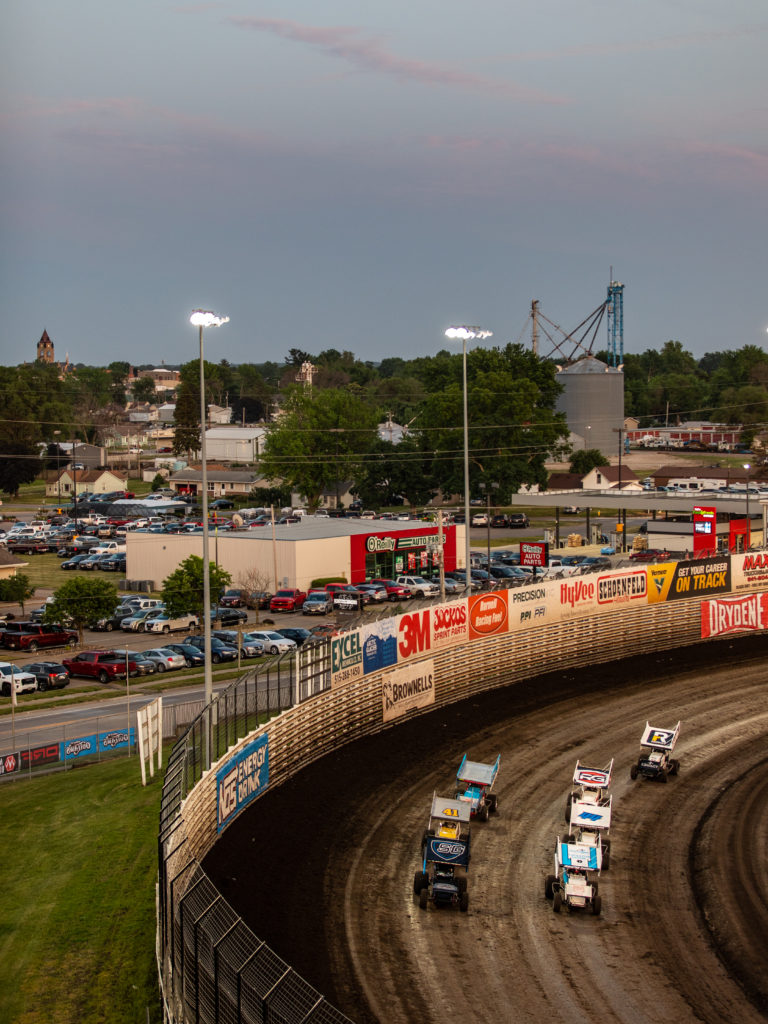
Australian Wade Aunger can attest to the community embrace firsthand. The sprint car superfan has made the international journey to Knoxville for three decades now, often providing Midwest racetrack excursions for Aussie gearheads. “I look at the world through corn-colored glasses,” says Aunger. One year at Knoxville, while hosting a 28-member group, he met a local farmer in the grandstands who inquired as to where the clan was staying. Aunger explained that due to the size of the group, they were forced to find accommodations in Des Moines. Without hesitation, the farmer and his wife invited the traveling group to stay with them. “We could have been ax murderers,” says Aunger. “He knew nothing about us.” And yet, that night, close to 30 Australians moved in with the local farmer for the weekend.
Given the raceway’s history and provenance, it is considered hallowed ground for many fanatics, and for that reason, many ceremonial events take place there, like a wedding in 2016 between Teri and Jerry Berry. “We were at the track one day and we started talking like, ‘Wouldn’t it be cool to get married here?’” says Jerry. “The whole aura of the place was just magical.” Less than six weeks after their conversation, the couple was wed in victory lane before the night’s race. The Hy-Vee across the street baked a tire-shaped wedding cake, drivers Jason Johnson and Craig Dollansky participated in the ceremony, and into the ring bearer’s pillow the couple had stitched, “When nothing goes right, go left.”
In love and in death, too. “Many times, after a race, you’ll see families scattering ashes of their loved one on the track,” says Kendra Jacobs. “We’ve even arranged for them to be thrown out of the pace truck.” A wedding destination, a funeral home, a racetrack, all in one.
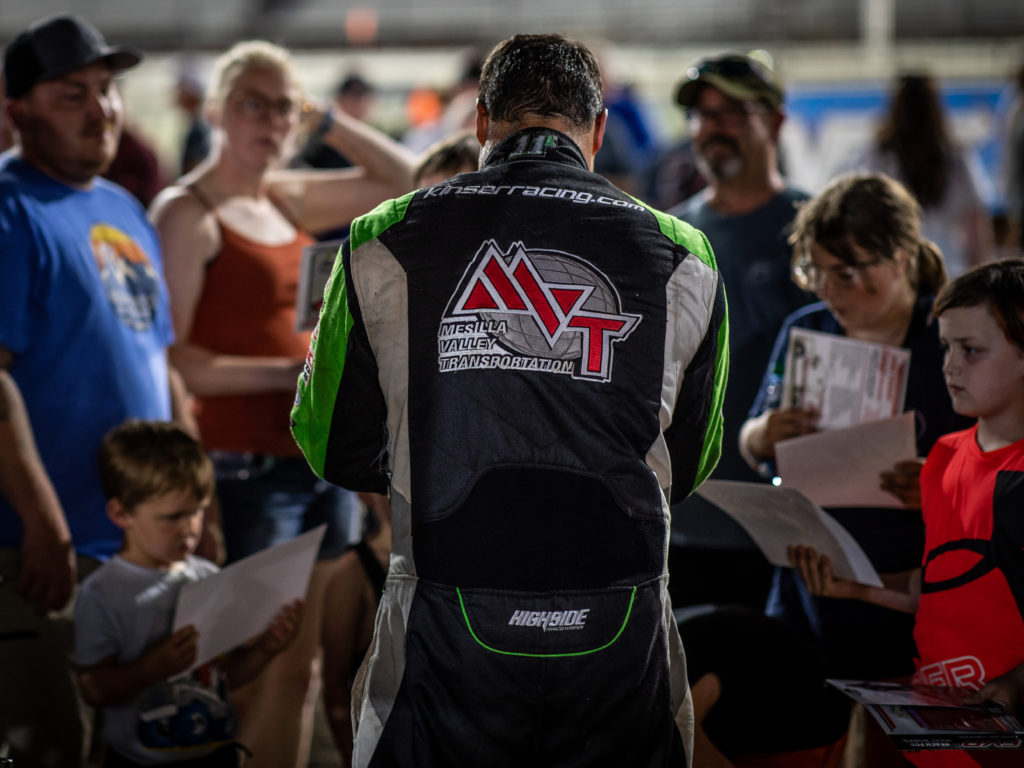
“Not every town embraces racing like Knoxville,” says Midwest racer Sawyer Phillips. It hasn’t happened without heavy lifting from local officials and the fair board to set the relationship up for success. Ever proactive, the fair board goes to great lengths to be upstanding neighbors. Several years ago, in fact, the track mandated mufflers on all race cars to mitigate noise. The fair board welcomes new families into its community, and at times, it has provided complimentary tickets to the race so that families may witness the spectacle firsthand. “If this was the popcorn capital of the world, I would still be invested,” says Mottet, “I mean, racing is what this community’s known for.” As a result, Knoxville Raceway seems to have complete buy-in from its surrounding town and even Marion County, down to the sprint car-shaped cookies for sale in a neighboring village’s bakery.
- A Knoxville Raceway safety crew member looks on.
- Knoxville superfan Steve Johnson, aka “the Godfather.”
Impact on the community aside, small-town tracks like Knoxville Raceway are also fundamental to the stewardship of automotive enthusiasm and the long-term preservation of internal combustion engines. Horses became recreational beasts with the advent of the automobile, relegated to fenced meadows and race tracks. Decades from now, when the entire world favors autonomous vehicles, where will people drive? Local circle tracks, for one.
As the Saturday night race wound down, tension picked up. Macedo was closing on Madsen, who had gone uncontested for the last 15 laps. Four to go, then three, then two. They were virtually conjoined at their bumpers by the time they crossed under the white flag. Madsen bobbled in Turn 2 and Macedo mashed the throttle to pull even, blue smoke pluming from his spinning tires. Side by side, the leaders darted down the backstretch as 3000 fans leaned forward in their seats. Macedo, by a car-length. Madsen and a storming-mad swarm followed in hot pursuit. While the defeated packed up their equipment, the night’s champion Macedo climbed from his cockpit in the winner’s circle, photographers jostling around his steaming car for a shot of the hazel-eyed youngster. He shot a pointer finger into the Iowa night sky and Knoxville roared.
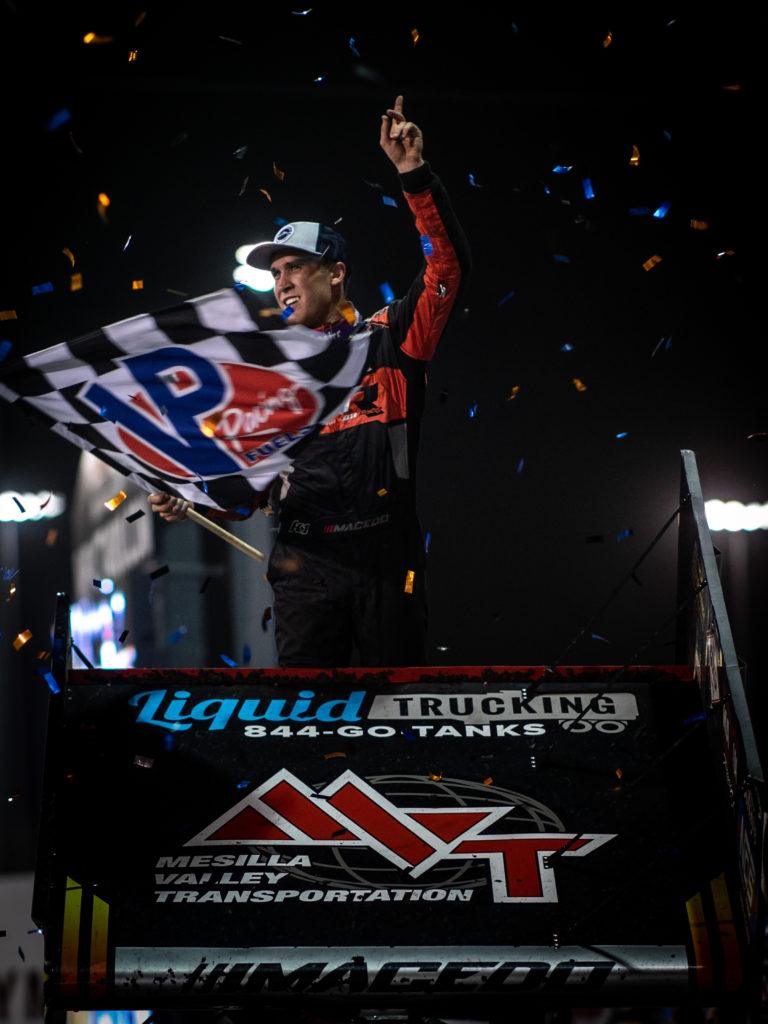

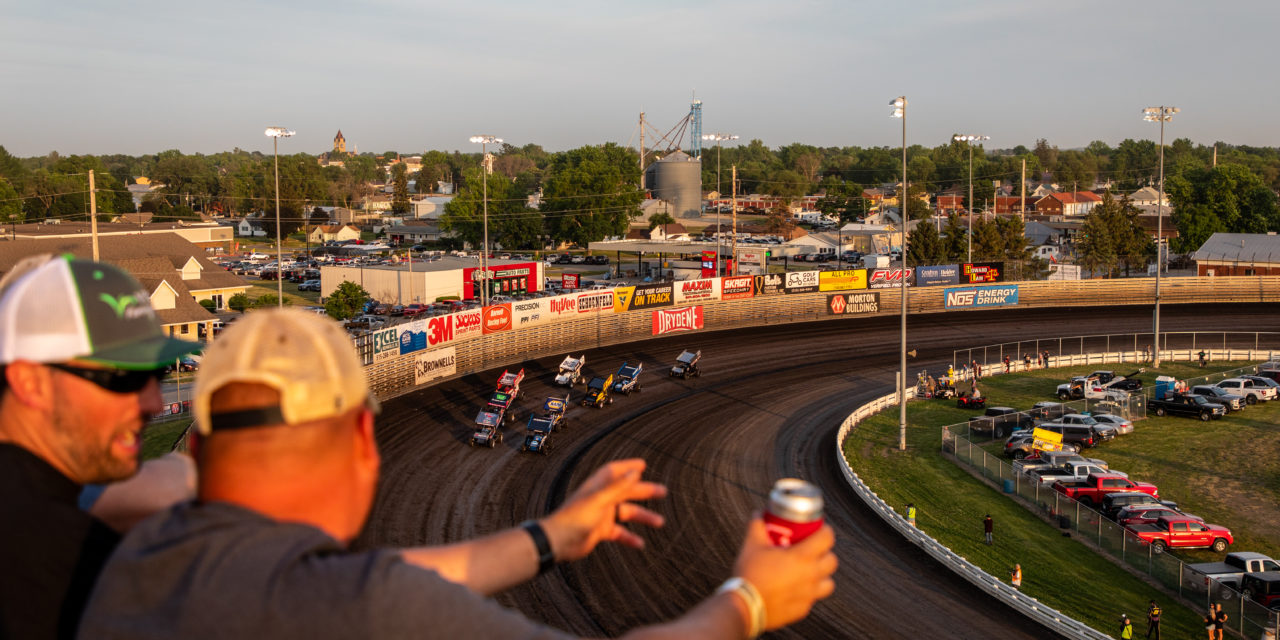
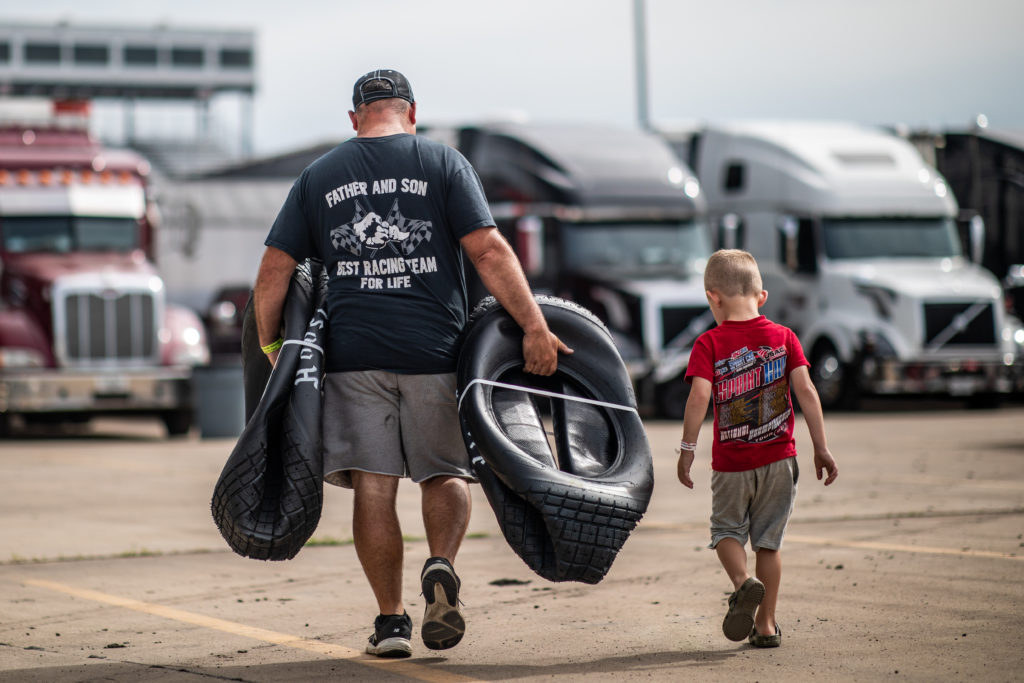
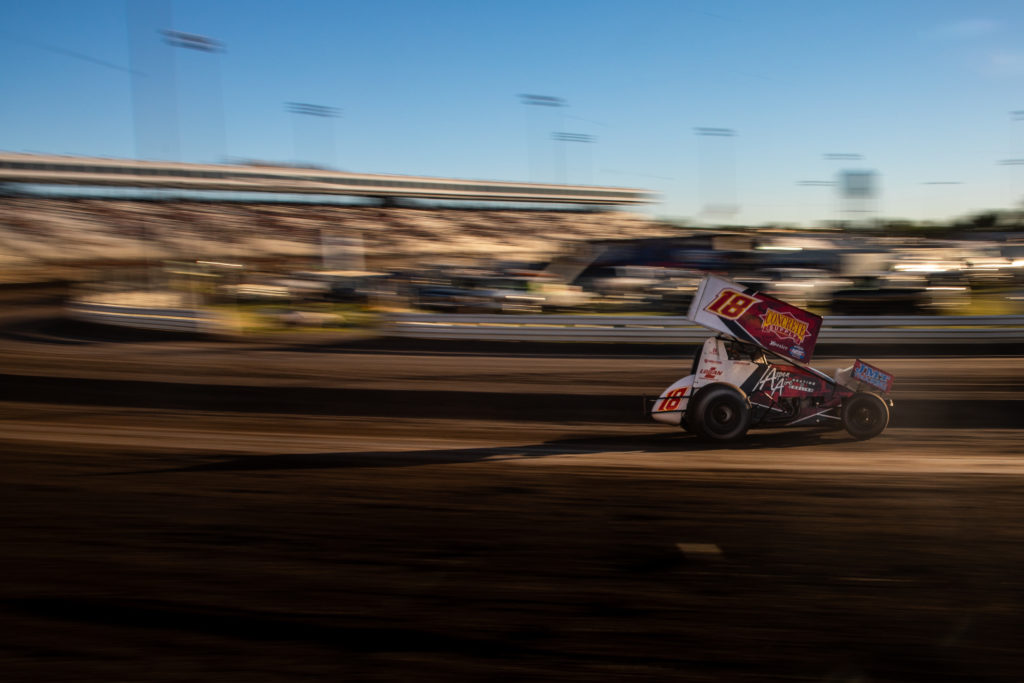
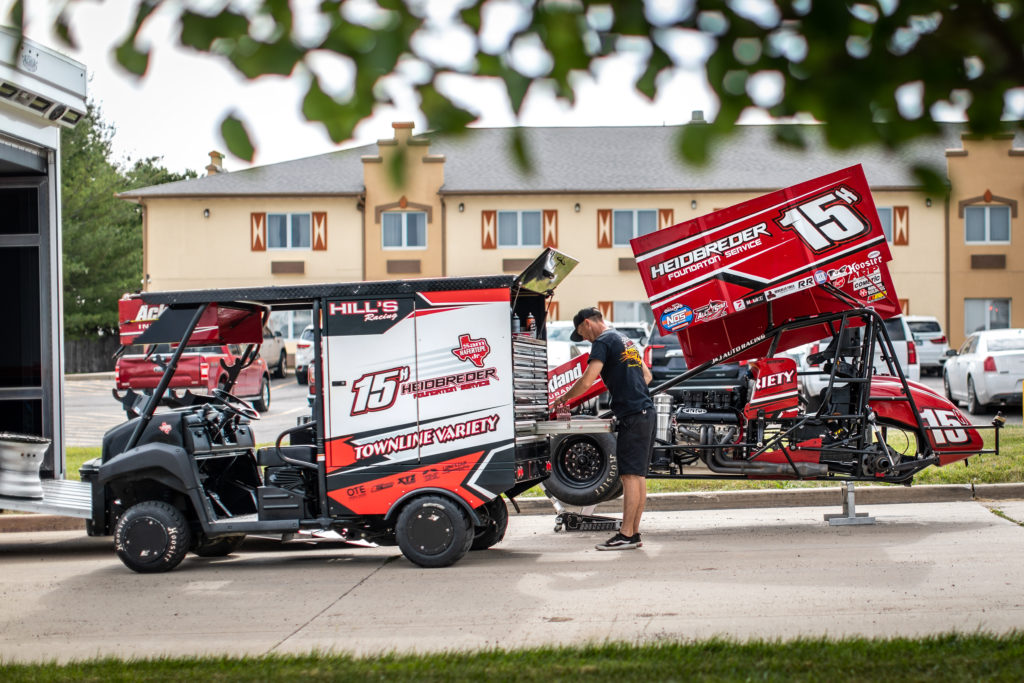
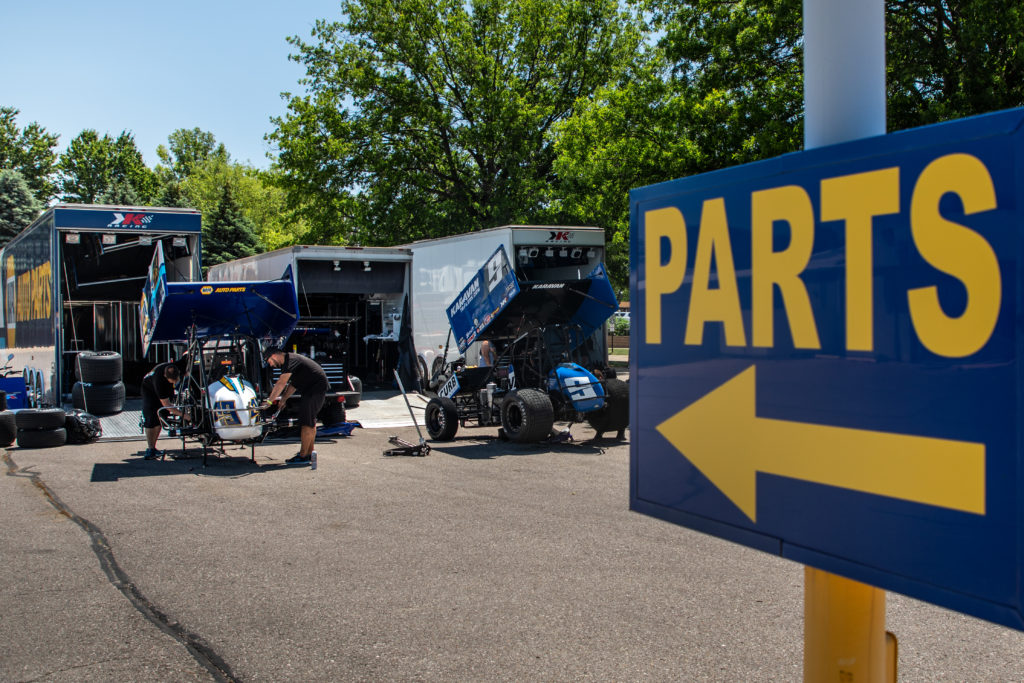
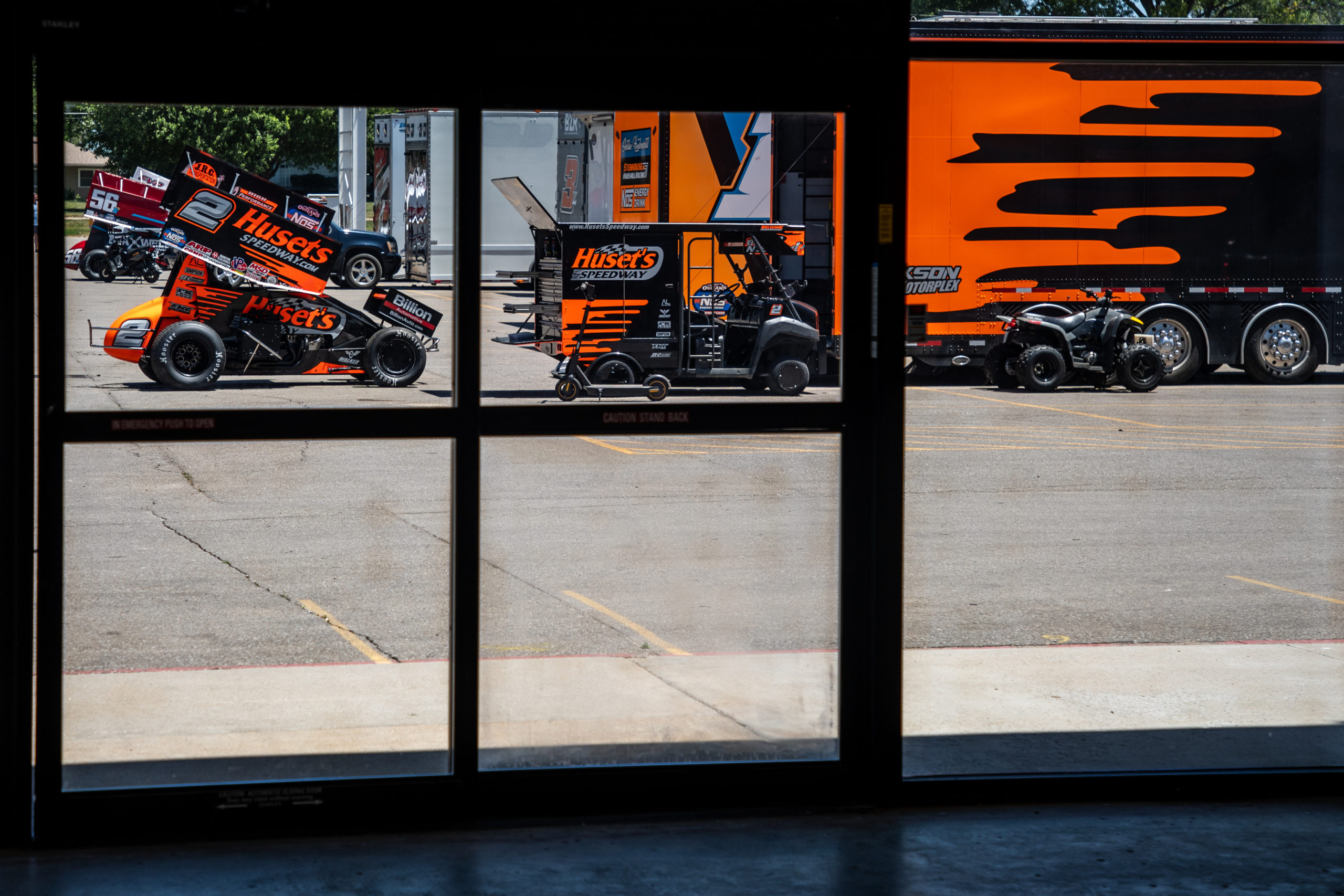
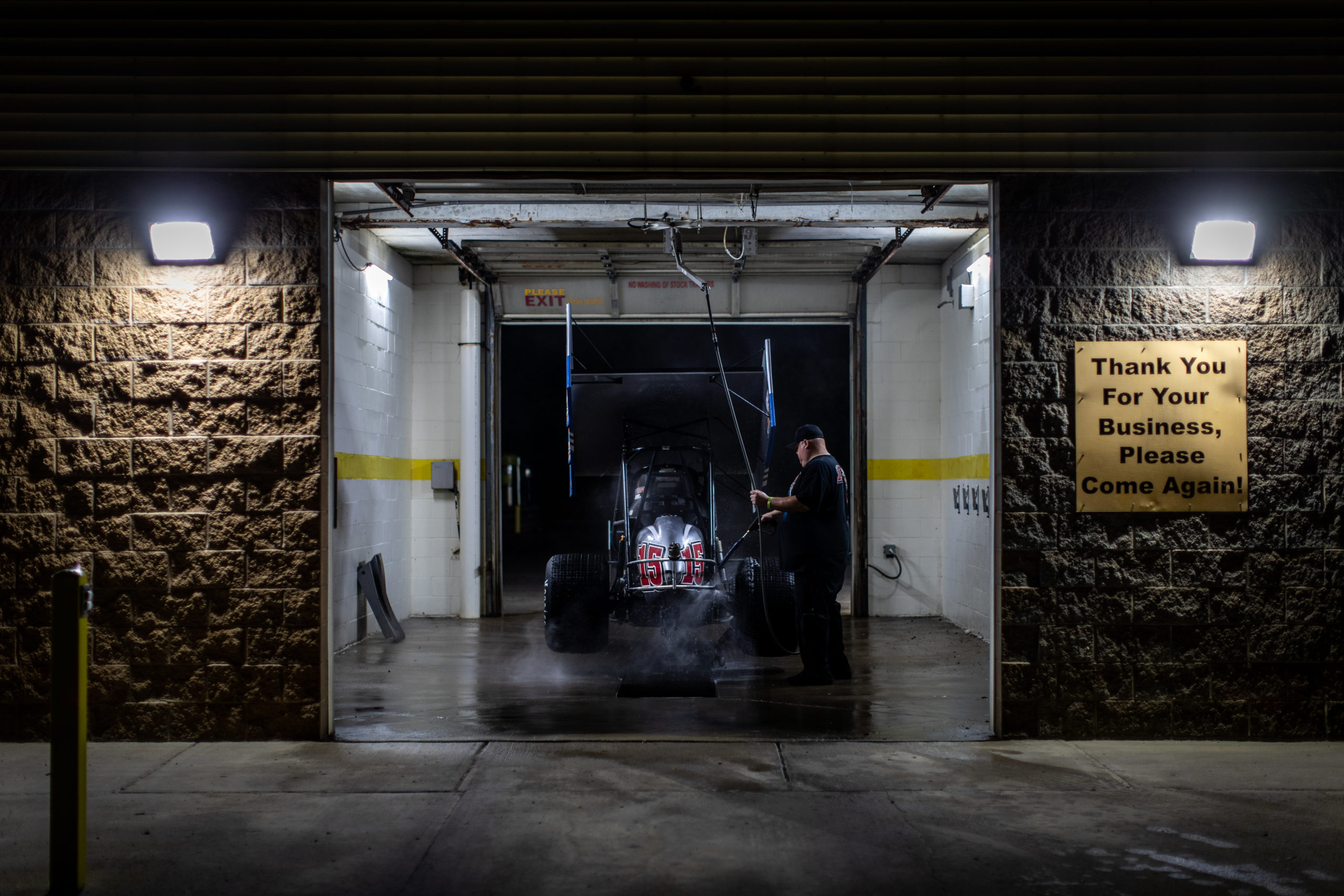
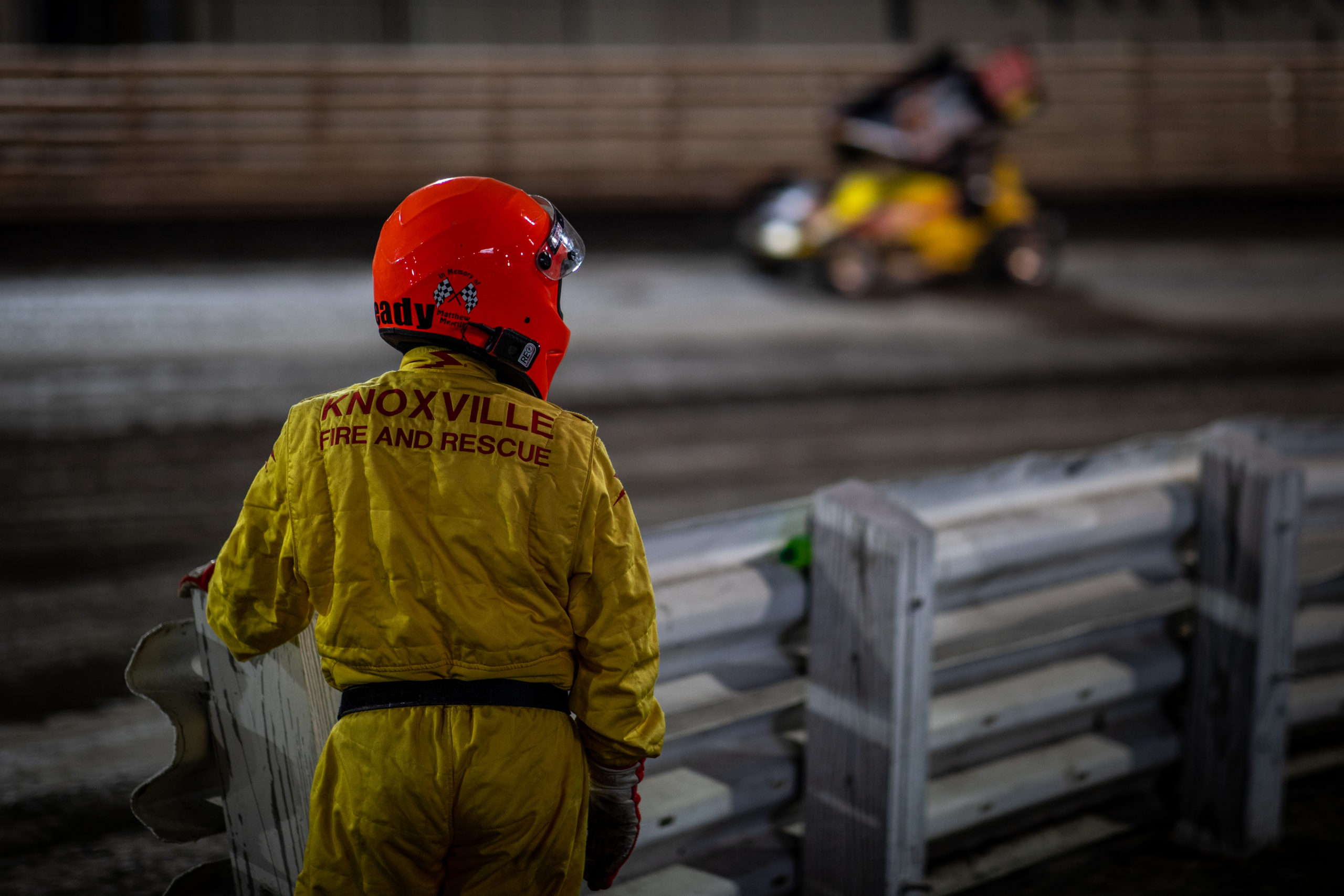
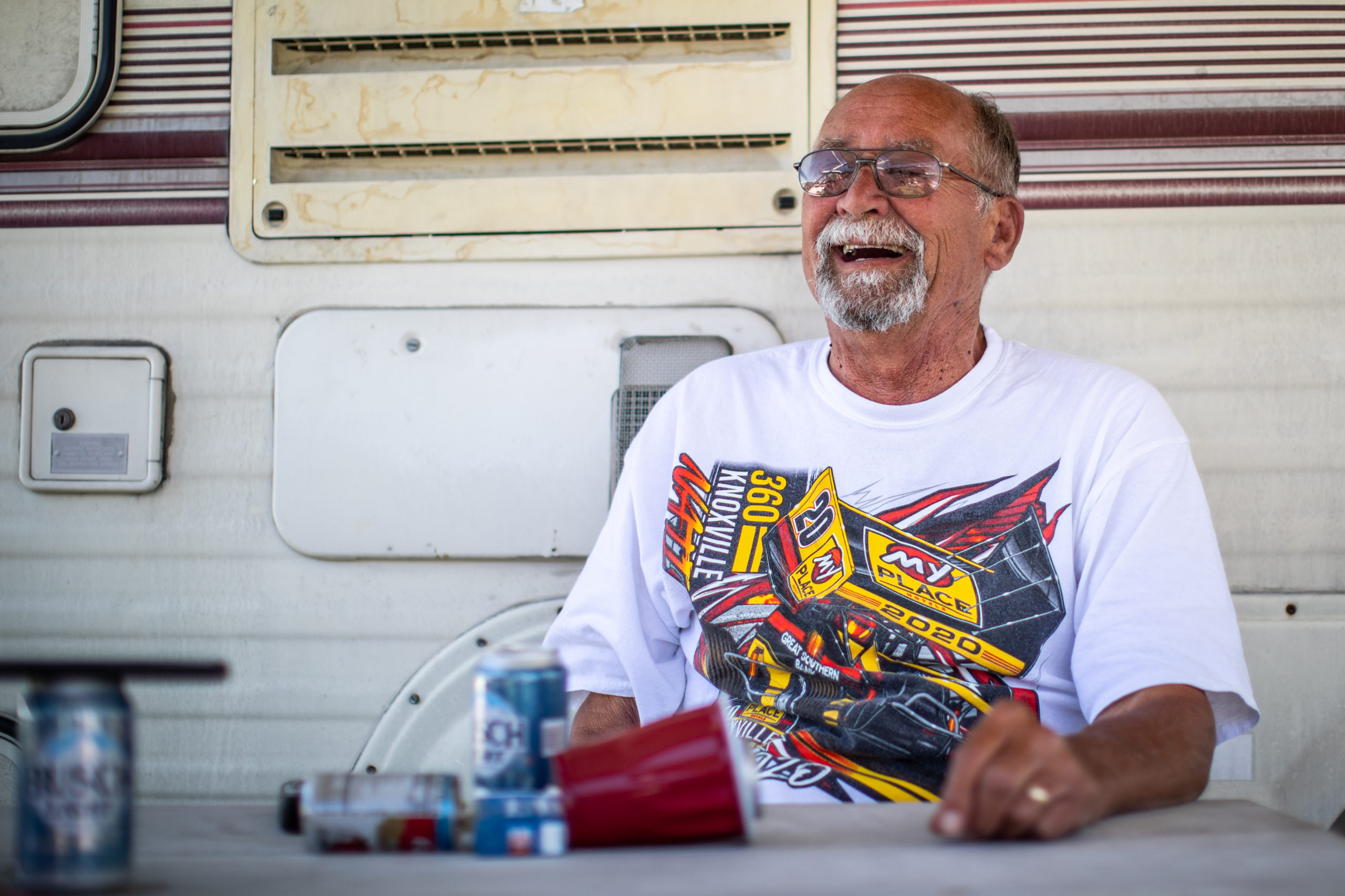
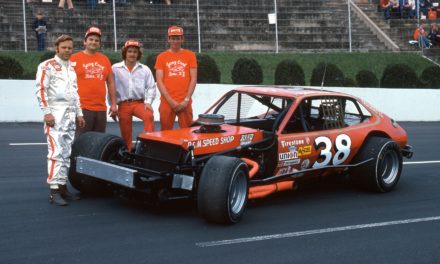
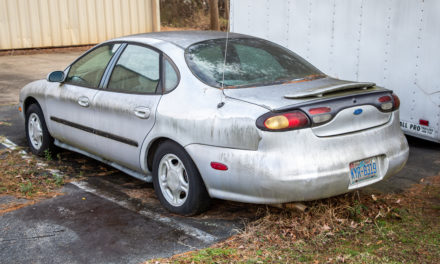
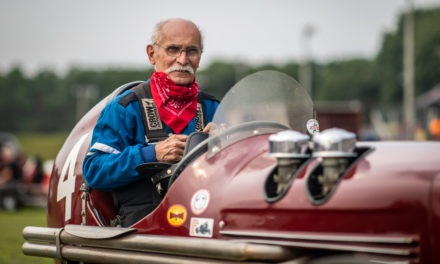
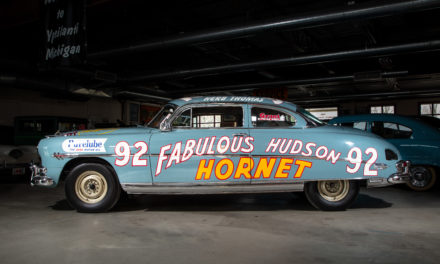





Irony: Monmouth Park, a horseracing venue in NJ was originally built for auto racing. Flemington Speedway in NJ was originally a horseracing track, but became a famous auto racing track.